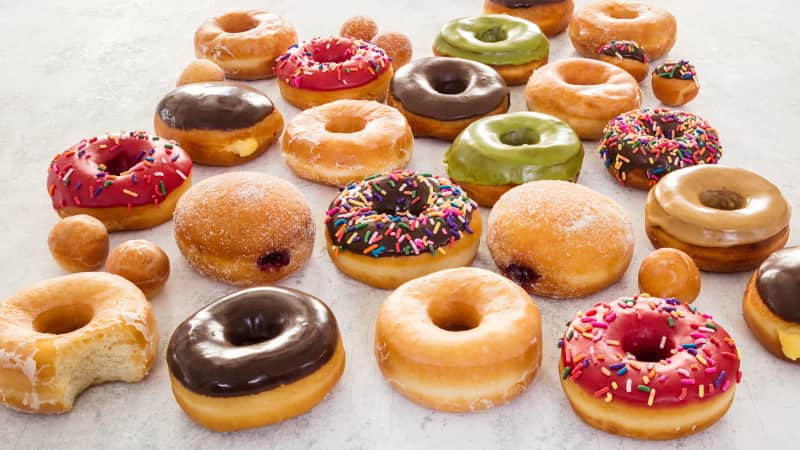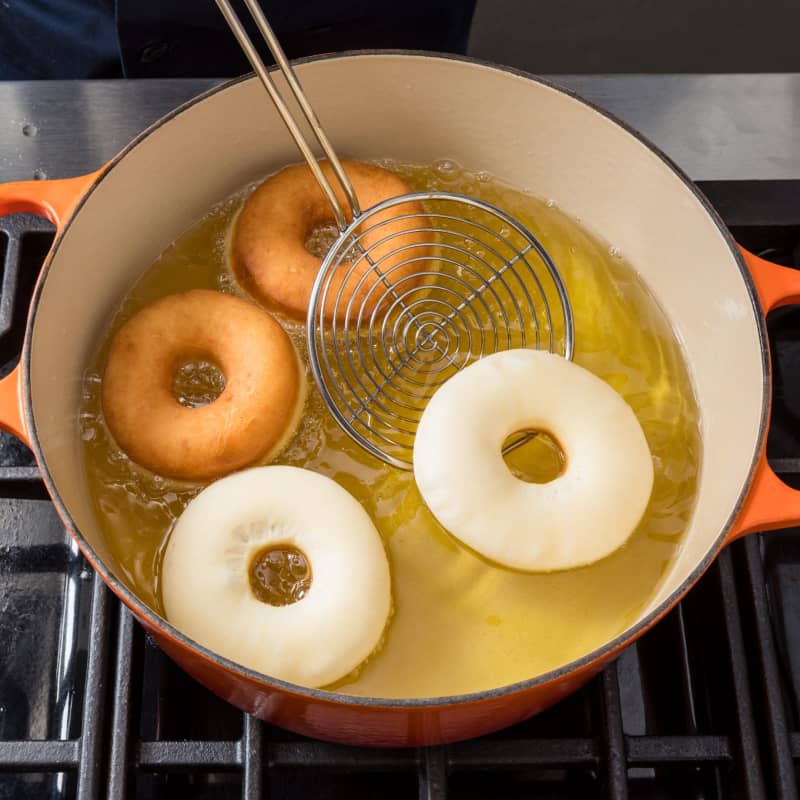My Goals and Discoveries
Moist, light texture
A careful balance of fat, sugar, and liquid produces soft, tender doughnuts with delicate chew.
Convenient timing
We chill the dough overnight—a step called cold fermentation—so that it’s faster to make the doughnuts in the morning. The dough also develops more complex flavor and has time to relax so that it’s easy to roll out.
Reliable yield
Rolling out the dough to specific dimensions guarantees that you’ll get 12 doughnuts.
Sheer glaze
A combination of confectioners’ sugar and hot water produces a thin, opaque fluid that dries matte.












